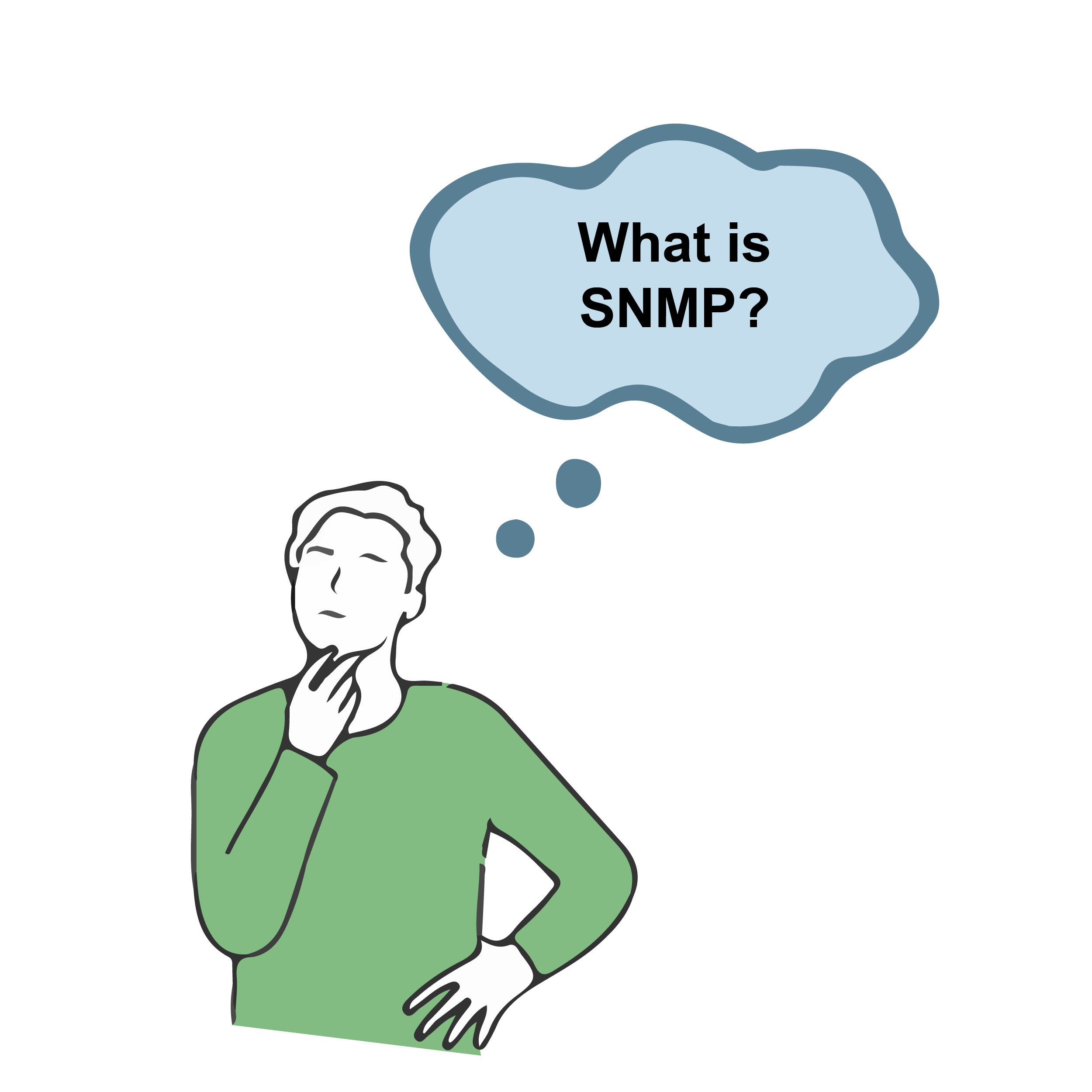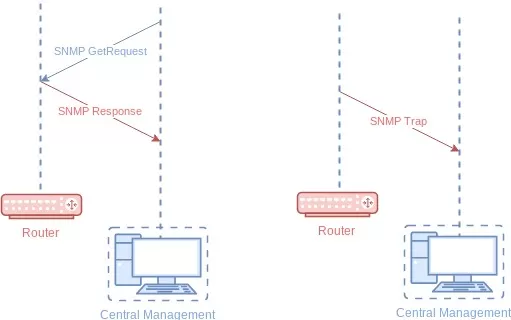Check out our White Paper Series!
A complete library of helpful advice and survival guides for every aspect of system monitoring and control.
1-800-693-0351
Have a specific question? Ask our team of expert engineers and get a specific answer!
Sign up for the next DPS Factory Training!

Whether you're new to our equipment or you've used it for years, DPS factory training is the best way to get more from your monitoring.
Reserve Your Seat TodayIn the world of network management, Simple Network Management Protocol (SNMP) is the most commonly used protocol for, you guessed it, network management.
What is SNMP? What can it do for you? How can you use it successfully?
Let's get started.

SNMP is a protocol (a shared machine-to-machine language) that allows for communication between different network devices.
It uses Protocol Data Units (PDUs) to exchange data between the SNMP agent (some kind of remote device) and the (central) SNMP management software.
The key components of SNMP monitoring are:
Each network device within an SNMP-based system houses an SNMP agent, a piece of software that collects vital performance metrics about the device it resides on. More commonly, you'll hear the entire device referred to as an "SNMP agent". Technically, the agent is just one subcomponent of the device.
This system allows users like you to monitor performance metrics, environmental levels, and equipment alarms remotely. You can also set up alerts systems in order to detect when something is wrong with your network/operation.
Overall, SNMP can be used to proactively manage and maintain your network environment, ensuring that all devices are running correctly and efficiently.
As a generic example, let's say an unexpected issue occurs on a network device. The SNMP agent on that device would send an SNMP trap.
Think of an SNMP trap as really just something like an "urgent email message" sent to the network manager when a device encounters a problem. The trap message informs the SNMP management software of the issue, prompting an immediate on-screen alert (or emails or text messages or other outbound alerts, depending on the urgency).
In addition, one of the most appreciated features of modern SNMP monitoring software is its ability to automatically discover new devices on the network. Network discovery can help you stay updated about every new device under your monitoring umbrella without any additional manual effort.

SNMP is a crucial tool that aids in identifying and responding to network issues both effectively and efficiently.
Effectiveness and efficiency are both important concepts in fault management:
Used properly, SNMP will help you accomplish both of these goals.
The tasks involved in network monitoring generally include:
Fault management, on the other hand, is about detecting, isolating, and correcting faults in a networked system, and SNMP plays a key role in this process.
As we've discussed already, SNMP traps have properties that make them particularly useful in fault management. They allow the system to notify network managers of potential issues that arise.
Your SNMP monitoring software can be configured to detect specific events or thresholds, and react automatically, for example, by sending alerts or even triggering automatic corrective scripts.
It's hard to imagine a better definition of "fault management" than that.
When it comes to network fault management tools, they provide an overview of error sources. They do so by monitoring and collecting data from various network devices. This allows you to isolate issues quickly.
By leveraging real-time alerts and detailed analysis, the tool can pinpoint the exact location and nature of the fault, whether it's a hardware failure, configuration error, or connectivity issue. This targeted approach not only speeds up troubleshooting but also enables you to implement corrective measures more efficiently. Quick troubleshooting and corrective measures minimize network downtime and improve overall reliability.
Getting started with SNMP is straightforward. You'll need a few key components to set up your monitoring system:
Once these components are in place, you'll be able to start gathering data about your network devices and gain better visibility into their performance and alarm conditions.
Armed with this knowledge, you'll be able to monitor the performance of your network devices more effectively and identify any faults before they become major problems with major financial impact.
SNMP monitoring, with its wide range of monitoring capabilities, plays a vital role in effective fault management. It equips network administrators like you with the tools you need to stay one step ahead, ensuring optimal network performance at all times.
Monitoring using SNMP is one of the most effective methods of performing fault management within an organization. With SNMP, you can monitor and manage your networks more effectively with the help of trap messages sent by the devices in the network.
SNMP-powered tools allow administrators like you to gain insight into your system performance metrics and issue alerts when any fault occurs, no matter which layer is the source of the problem.

RTUs and central master stations are two major categories of SNMP-capable devices.
NetGuardians, for example, are an excellent option for gathering information from critical points in your network. These all-in-one RTUs can monitor multiple devices at once and send out notifications if any of them experience a fault or performance issue.
T/Mon is another great example of an SNMP-capable device that can be used to monitor and manage large networks with ease. With its central master station design, T/Mon gives you the ability to monitor a wide range of device alarm conditions and provide better visibility into your overall system performance metrics.
At DPS Telecom, our team of experienced engineers is here to help you get the most out of your SNMP monitoring and fault management solutions. We have the right expertise to provide you with guidance or aid in designing custom solutions that meet your business needs.
Give us a call anytime: 1-800-693-0351
Email us: sales@dpstele.com

Andrew Erickson
Andrew Erickson is an Application Engineer at DPS Telecom, a manufacturer of semi-custom remote alarm monitoring systems based in Fresno, California. Andrew brings more than 18 years of experience building site monitoring solutions, developing intuitive user interfaces and documentation, and opt...